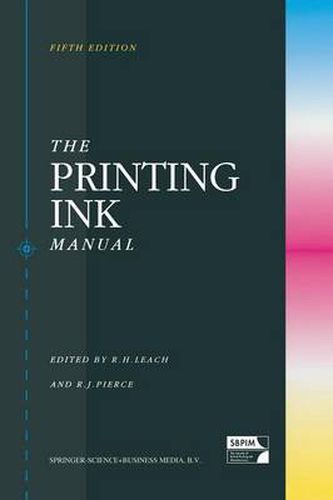Readings Newsletter
Become a Readings Member to make your shopping experience even easier.
Sign in or sign up for free!
You’re not far away from qualifying for FREE standard shipping within Australia
You’ve qualified for FREE standard shipping within Australia
The cart is loading…






This title is printed to order. This book may have been self-published. If so, we cannot guarantee the quality of the content. In the main most books will have gone through the editing process however some may not. We therefore suggest that you be aware of this before ordering this book. If in doubt check either the author or publisher’s details as we are unable to accept any returns unless they are faulty. Please contact us if you have any questions.
The first edition of the Printing Ink Manual was published by the Society of British Printing Ink Manufacturers in 1961 to fill the need for an authorative textbook on printing technology, which would serve both as a training manual and a reliable reference book for everyday use. The book soon became established as a standard source of information on printing inks and reached its fourth edition by 1988. This, the fifth edition, is being published only five years later, so rapid has been the development in technology. The objective of the Printing Ink Manual remains unchanged. It is a practical handbook designed for use by everyone engaged in the printing ink industry and the associated industries. It provides all the information required by the ink technical for the day-to-day formulation of printing inks. It supplies the factory manager with details of the latest equipment and manufacturing methods, including large-scale production, and gives guidance on achieving quality assessment and total quality management specifications. Care has been taken to maintain the value of the Manual for training both technical personnel and others who requiresome kn- ledge of inks. Readers with little scientific knowledge will not find dif- culty in using the Manual, but sufficient chemistry and physics have been included to provide an explanation of the underlying principles and theories governing the behaviour of inks for use by the advanced te- nologist. Suppliers of raw materials, substrate manufacturers, printers and print users will find the book a valuable source of information.
$9.00 standard shipping within Australia
FREE standard shipping within Australia for orders over $100.00
Express & International shipping calculated at checkout
This title is printed to order. This book may have been self-published. If so, we cannot guarantee the quality of the content. In the main most books will have gone through the editing process however some may not. We therefore suggest that you be aware of this before ordering this book. If in doubt check either the author or publisher’s details as we are unable to accept any returns unless they are faulty. Please contact us if you have any questions.
The first edition of the Printing Ink Manual was published by the Society of British Printing Ink Manufacturers in 1961 to fill the need for an authorative textbook on printing technology, which would serve both as a training manual and a reliable reference book for everyday use. The book soon became established as a standard source of information on printing inks and reached its fourth edition by 1988. This, the fifth edition, is being published only five years later, so rapid has been the development in technology. The objective of the Printing Ink Manual remains unchanged. It is a practical handbook designed for use by everyone engaged in the printing ink industry and the associated industries. It provides all the information required by the ink technical for the day-to-day formulation of printing inks. It supplies the factory manager with details of the latest equipment and manufacturing methods, including large-scale production, and gives guidance on achieving quality assessment and total quality management specifications. Care has been taken to maintain the value of the Manual for training both technical personnel and others who requiresome kn- ledge of inks. Readers with little scientific knowledge will not find dif- culty in using the Manual, but sufficient chemistry and physics have been included to provide an explanation of the underlying principles and theories governing the behaviour of inks for use by the advanced te- nologist. Suppliers of raw materials, substrate manufacturers, printers and print users will find the book a valuable source of information.